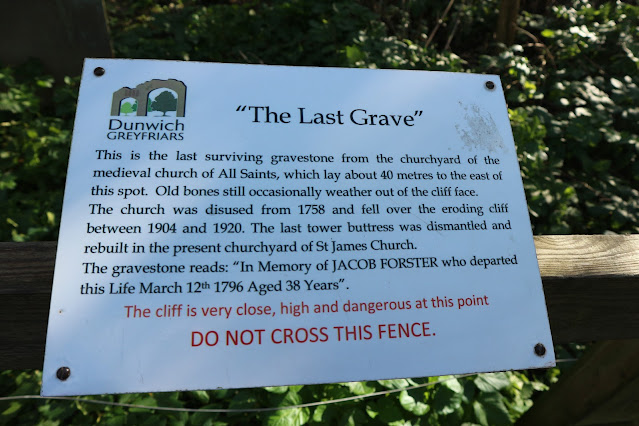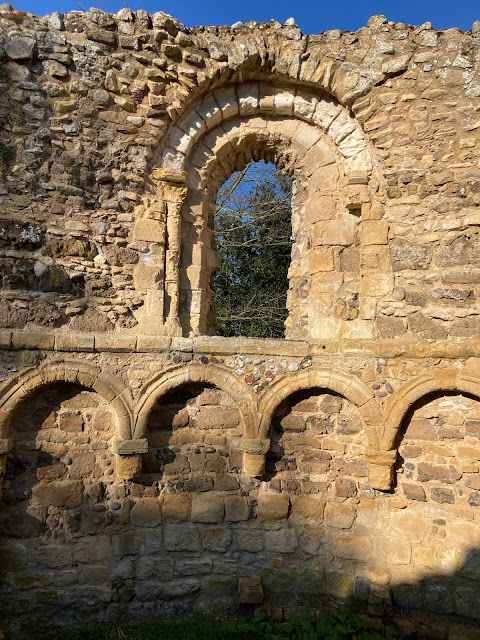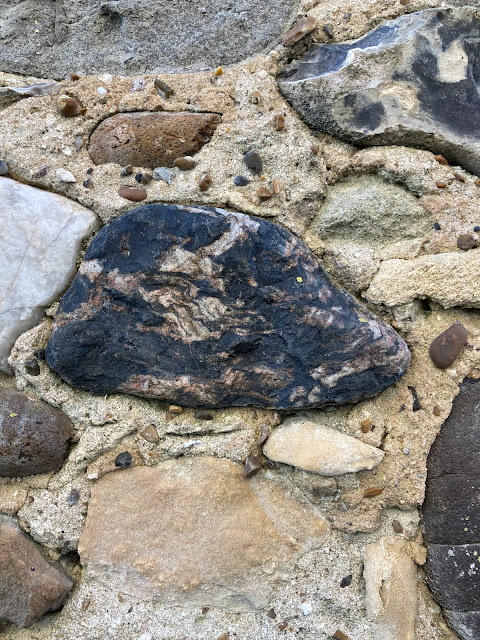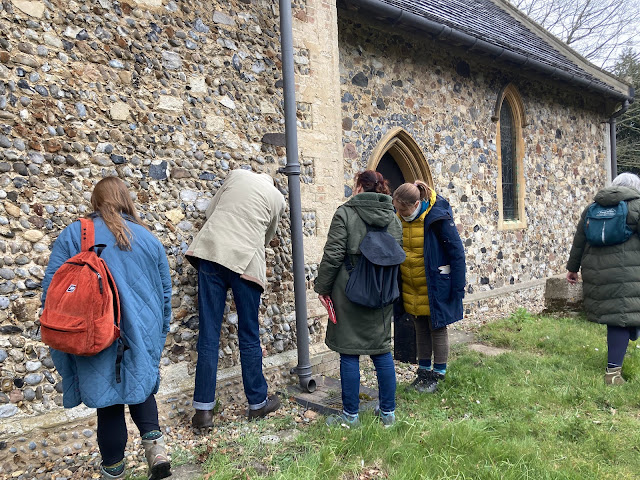Staff and Volunteer Training Days: Geology
A fossil-rich limestone in the walls of Greyfriars.
 |
| Local flints |
Small boulders of pale Jurassic limestone and brown-stained flint.
A beautifully iron-stained flint, probably originating from the Norwich Crag gravels
which are found in the Dunwich area.
Geologist Tim Holt-Wilson explaining the wonderful variety of stones in the walls
of the Leper Chapel.
Shaped blocks of Caen stone, a Jurassic limestone from Normandy in France, which
was a favourite building material of architects in the early Mediaeval period.
A chequerboard pattern of knapped flints and squared Caen limestone in the base
of the buttress of All Saints' Church which was destroyed by the sea over a century ago.
The buttress was re-erected in St James's Church yard in 1922.
The last surviving gravestone from the churchyard of All Saints on the cliff top.
The other graves as well as the church itself on have been destroyed by coastal erosion.
A wall of local flints and exotic boulders, repaired by the Dunwich Greyfriars Trust.
A chalk boulder in the wall of Greyfriars.
Rounded, spreading patches of the lichen Diploicia canescens which often has
a distinctive, flaky centre.
Arcading and a window in the apse at the east end of the Leper Chapel.
The sculpted blocks are made from imported Jurassic limestone from Caen
in Normandy, framing a rubble wall made from Eocene mudstone imported
from the Harwich area.
A splendid example of a migmatite, a metamorphic rock formed deep in the Earth's
crust, perhaps 30 km down.
A boulder of Old red Sandstone of Devonian age (perhaps 380 million years old).
This is found in NE Scotland and the Orkney Isles.
A weathered boulder of London Clay mudstone (aka cementstone). The pitting is most
likely due to the activities of boring invertebrates on the sea bed.
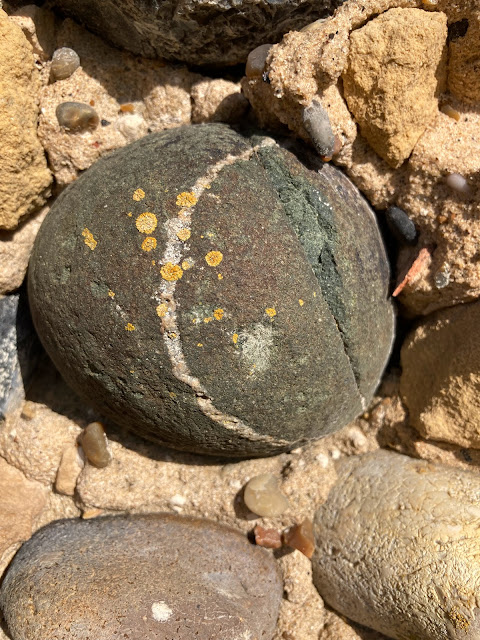 |
| Unknown green bolder in Monastery wall- ballast from afar? |
A distinctive lichen called Opegrapha calcarea.











